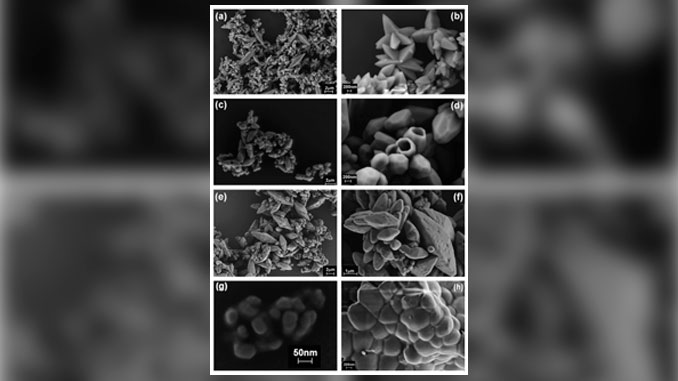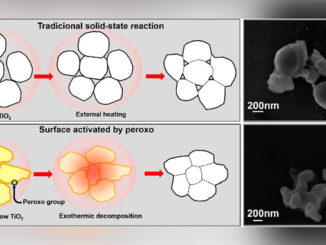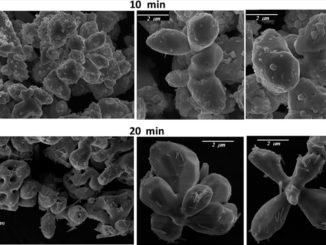
Writers: Maria F. C. Abreu, Fabiana V. Motta, Renata C. Lima, Maximo S. Li, Elson Longo, Ana Paula de A. Marques
Keywords: Microwave processing; Optical properties; Transition metal oxides; Ceramics; Chemical syntheses
Abstract: Barium molybdate particles (BaMoO4) with uniform shapes have applications in various fields such as phosphors, optical fibers, scintillators, magnets and catalysts. In this study, two synthesis methods (microwave-assisted hydrothermal (MAH) and Complex Polymerization (CP)) were used to prepare BaMoO4 particles. The effect of the applied synthesis methodology and experimental parameters on the morphology, particle size, sample uniformity and optical properties of the BaMoO4 were studied. Scheelite-type single crystalline structures of BaMoO4 were identified by X-ray diffraction (XRD) as well as Raman and Fourier transform infrared spectroscopy (FTIR). Octahedral morphologies were characterized by field-emission scanning electron microscopy (FE-SEM). Photoluminescence (PL) spectra of the samples exhibited different emission properties which indicates a relationship with surface defect states (shallow and deep level defects) where interfaces populate additional levels in the band gap. Electronic order-disorder at short- and intermediate-ranges is generated by utilizing the synthesis method and can be modified by applied experimental parameters. If the particle size and morphology are controlled, deep and shallow defects can be controlled, and PL properties can be modified accordingly with the optical properties desired.




